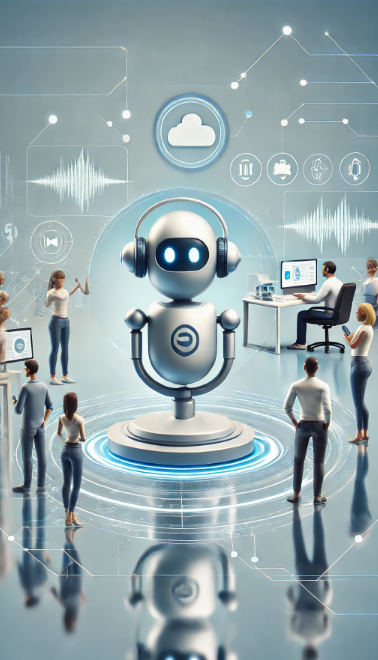What is NLP AI and How Does it Change the Future of Communication?

NLP, or Natural Language Processing, is a branch of artificial intelligence focused on understanding, analyzing, and generating human language. This includes both spoken and written text. By using techniques like machine learning (ML), deep learning, and semantic analysis, NLP enables computers to understand and interact with human communication.
How Does NLP Work?
NLP combines complex algorithms and technologies like neural networks and deep learning models to analyze and understand language patterns. It processes large amounts of unstructured data, such as text or spoken words, which are then classified and analyzed. NLP uses various techniques, including syntactic analysis to check the grammatical structure of sentences and semantic analysis to understand the meaning of words and sentences in the correct context.
For example, a word like “bank” can have multiple meanings. NLP AI uses Natural Language Understanding (NLU) to determine whether it refers to a piece of furniture or a financial institution, depending on the context of the sentence. NLP’s ability to understand natural language makes it applicable in a wide range of scenarios.
Applications of Natural Language Processing (NLP)
Natural Language Processing is widely used in our daily lives. Here are some examples:
- Virtual Assistants: NLP powers digital assistants like Google Assistant, Alexa, and Siri, enabling them to understand human language and perform appropriate actions.
- Automatic Translation: Tools like Google Translate use NLP to translate text from one language to another.
- Social Media Monitoring: Companies use sentiment analysis to evaluate opinions in textual data like reviews or social media posts.
- Content Moderation: NLP helps filter unwanted content and spam on online platforms.
- Medical Records: NLP is used to analyze medical documents and extract relevant information.
NLP AI in Telephony
In the telephony world, NLP is transforming how businesses communicate with customers. Examples include:
- Virtual Receptionists: NLP AI can answer frequently asked questions and direct calls to the appropriate department.
- Call Transcription: NLP processes and analyzes calls to provide insights into customer behavior.
- Customer Service: By leveraging natural language processing, businesses can automatically answer complex customer queries, for example, through a chatbot, improving efficiency.
Challenges and Limitations of NLP
Spelling errors and language differences can pose significant challenges for natural language processing. Texts often contain typos, inconsistencies in style, and errors, making it difficult for NLP systems to interpret the correct information. Language differences, such as dialects or cultural variations, add another layer of complexity, potentially hindering an NLP system’s ability to process texts accurately in different contexts.
Additionally, NLP systems face issues with bias and uncertainty. Since they are based on human logic and trained on existing datasets, they can inherit the biases of the programmers or the data. This can lead to inaccurate or biased results, especially in situations where the data is not representative or balanced. Ensuring NLP is fully objective and reliable remains a challenge.
How Does NLP Change the Future?
NLP makes communication between humans and machines more natural and effective. It enables businesses to analyze large amounts of textual data, understand context, and provide faster responses. In the future, NLP AI will be able to perform even more complex tasks, such as interpreting emotions in text or generating full human-like conversations.
Frequently asked questions
A quick way to explore how everything works and what to expect.
NLP stands for Natural Language Processing and is a technology that helps computers understand and process human language.
It works by analyzing large amounts of text or spoken language using techniques like syntactic and semantic analysis.
NLP is used in virtual assistants, automatic translations, sentiment analysis, customer service, and more.
Syntactic analysis checks the grammatical structure, while semantic analysis focuses on the meaning and context of words.
NLP can be inaccurate with complex sentences or multiple meanings, leading to misinterpretations.

 Netherlands
Netherlands Belgium
Belgium Denmark
Denmark Germany
Germany France
France Switzerland
Switzerland Austria
Austria UK
UK Spain
Spain Italy
Italy


